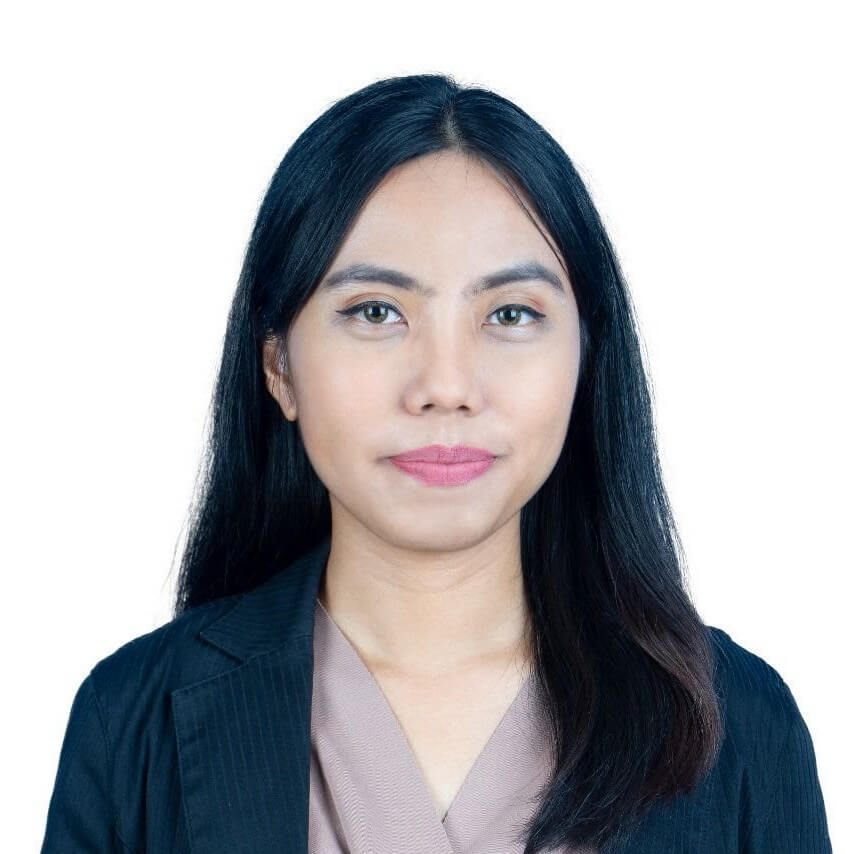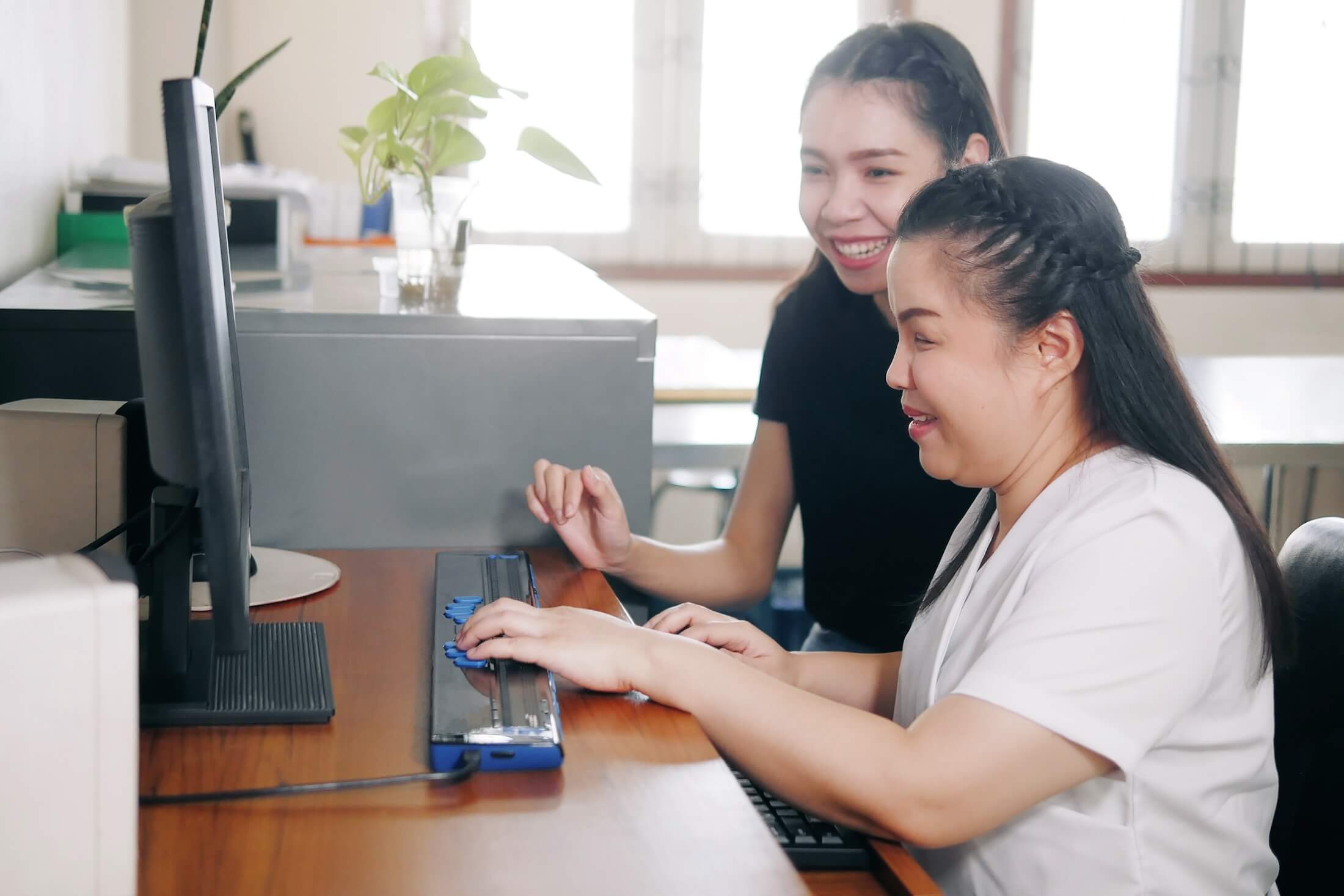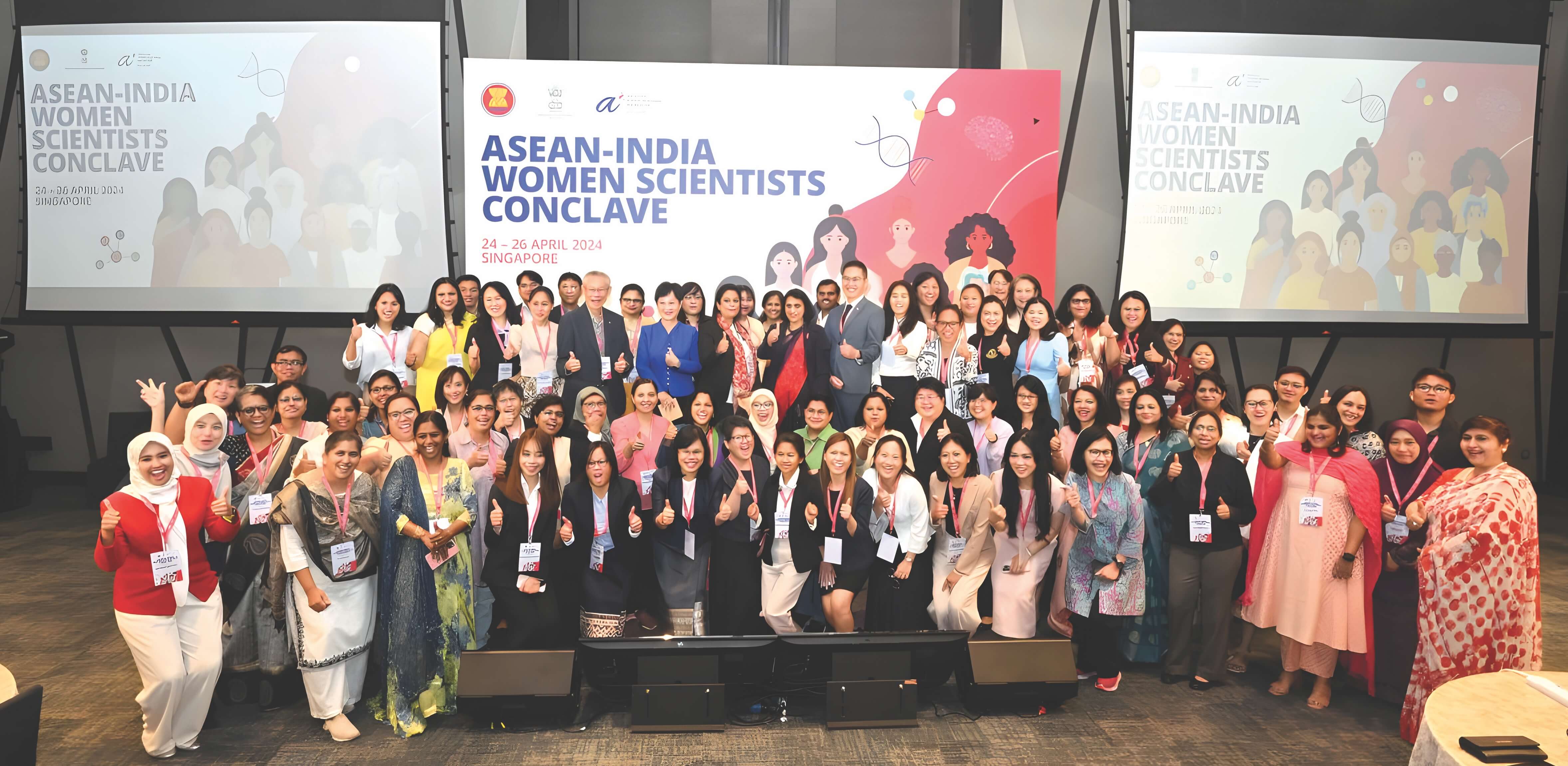







According to the World Health Organization (WHO), in 2023, persons with disabilities— including physical, intellectual, and mental disabilities—represent 16 per cent of the world’s population. This is equivalent to 1.3 billion people, 80 per cent of whom acquired their disabilities between the ages of 18 and 64. Data from the UN Economic and Social Commission for Asia and the Pacific (UNESCAP) in 2021 indicates that 472 million of these individuals are of working age, including women, youth, and rural residents, who often face disadvantages in socioeconomic activities, primarily in education and employment across the Asia-Pacific region.
Persistent challenges, such as attitudinal, environmental, institutional, and social barriers, are compounded by intersectional factors and were intensified by the COVID-19 pandemic. These barriers also hinder them from becoming equal and meaningful members of the people-centred ASEAN Community.
Advancing disability inclusion has emerged as a critical priority for the ASEAN Community, as reflected in its commitments under key international treaties and the development of regional instruments. All ASEAN Member States, for example, have ratified the United Nations Convention on the Rights of Persons with Disabilities (CRPD) and have participated in the Incheon Strategy to “Make the Right Real” for Persons with Disabilities in the Asia and Pacific 2013-2022.
In 2018, in line with the CRPD principles, ASEAN Leaders adopted the ASEAN Enabling Masterplan 2025 to guide the implementation and mainstreaming of the rights of persons with disabilities across the three ASEAN pillars. Despite these commitments, the evolution of disability inclusion remains slow. For example, people with disabilities remain an underutilised resource for driving the digital economy, let alone participating in it.
ASEAN’s journey towards disability inclusion faces significant challenges, particularly with the rapid pace of digital transformation and technological advancements. According to a 2020 UNESCAP report, persons with disabilities are two to six times less likely to be employed and have labour force participation rates two to five times lower than those without disabilities. These disparities risk exacerbating the digital divide, further marginalising this group in the growing digital economy.
A recent ERIA study on building an inclusive digital economy underscores the importance of addressing the disproportionate impact of exclusion on marginalised groups, such as youth, women, and persons with disabilities. It highlights the need to adopt inclusive principles that ensure everyone, regardless of background, has the opportunity to contribute to and benefit from the digital economy. This approach aims to create a fairer and more equitable digital ecosystem that leverages the diverse potential of all members of society.
The digital economy holds significant potential for advancing disability inclusion, particularly by creating new jobs in areas such as digital content creation, virtual assistance, programming, and data analytics. These emerging roles could provide employment opportunities for persons with disabilities, provided they gain the necessary digital skills and literacy. A recent UNESCAP report highlights that enabling persons with disabilities to work on equal terms with non-disabled individuals could increase GDP by 1 to 7 per cent in various Asia-Pacific countries, underscoring the economic benefits of inclusive employment practices.
As ASEAN continues negotiations on the Digital Economy Framework Agreement (DEFA), which aims to harness the region’s digital economy and potentially boost its value to 2 trillion US dollars by 2030, it is vital to ensure the active participation of persons with disabilities. Achieving this vision requires a systemic, innovative approach that spans education, healthcare, and employment sectors and involves collaboration among governments, businesses, and civil society stakeholders. Such coordinated efforts are crucial in fostering an inclusive digital economy that empowers persons with disabilities and maximises their contributions to regional growth.
First, inclusive education is a cornerstone for achieving Sustainable Development Goal 4 (SDG 4), emphasising quality education for all. Before the COVID-19 pandemic, UNESCO estimated that 9 per cent of 258 million children in Southeast Asia were out of school at primary and secondary levels. The pandemic exacerbated this issue, with school closures and lockdowns widening the learning gap and increasing the risk of children, particularly those with disabilities, dropping out permanently. This challenge calls for ASEAN to intensify efforts to recover from these setbacks while embracing the adoption of digital technologies.
A 2022 ERIA report on inclusive education highlighted that the pandemic’s impact on education disproportionately affected persons with disabilities. While the shift to educational technology (EdTech) created new learning opportunities, it also revealed the need for targeted assessments to tackle the unique requirements of students with disabilities, who often need additional support to thrive in digital learning environments.

Emerging innovations and start-ups are bridging these gaps by offering tailored education solutions. One notable example is Toybox Creations and Technology, the company behind Toy Eight, which provides tools for parents and preschool teachers to assess the developmental progress of preschool-aged children. This approach, informed by developmental psychology, supports customised learning experiences. By focusing on early childhood education, the company raises awareness among parents, educators, and industry stakeholders about the importance of identifying and addressing developmental barriers for children with disabilities. In recognition of regional initiatives, the company was named a winner of the 2024 One ASEAN Startup Award, hosted by the ERIA Digital Innovation Sustainable Economy Centre (E-DISC). Such initiatives illustrate the potential of innovative start-ups to create inclusive learning pathways and reduce barriers, ensuring that children with disabilities can access quality education and develop their full potential.
Second, to foster disability inclusion, workplaces and entrepreneurship must adopt strategies that integrate persons with disabilities into meaningful roles. Research by McKinsey has shown that diversity and inclusion practices are ethical imperatives and drivers of business success, helping companies attract top talent and improve overall performance. In ASEAN, some governments have implemented quota schemes to promote the employment of persons with disabilities. However, challenges remain in ensuring access to quality jobs and addressing barriers to workplace inclusion.
Social enterprises are playing an increasingly vital role in advancing disability inclusion across the region, as highlighted by an ERIA report on Social Enterprises and Disability.In Thailand, for instance, the social enterprise STEPS has partnered with IKEA to create an inclusive office model tailored to the needs of persons with disabilities, demonstrating how corporate partnerships can lead to more equitable workplaces. Similarly, Virtualahan provides digital literacy and technology training in the Philippines, including skills in data analytics, coding, and digital marketing, equipping persons with disabilities with tools to succeed in industries driven by the digital economy.
The rise of impact investing in ASEAN also presents an opportunity to scale initiatives focused on disability inclusion. By directing investments toward ventures that prioritise social impact, the region can create sustainable pathways for empowering persons with disabilities, bridging employment gaps and fostering entrepreneurship. These efforts enhance inclusivity and also unlock the potential of a more diverse and innovative workforce.
Third, ASEAN must prioritise the deployment of digital technology to enhance pathways for disability inclusion, particularly through Assistive Technology (AT). AI-powered tools such as voice recognition, speech-to-text transcription, and robotics have transformed how assistive devices support individuals with disabilities. These innovations promise significant improvements in accessibility and independence. However, there are growing concerns about potential biases in these technologies, as many lack inclusive design and fail to consider the unique needs of diverse populations. Without addressing these biases, such technologies risk exacerbating existing inequalities.
A noteworthy example of overcoming these challenges is The Vulcan Coalition. This Thailand-based start-up has partnered with the Thai Ministry of Social Development and Human Security in an innovative programme to upskill persons with disabilities in digital skills. The initiative trains participants as data labellers to help improve AI systems, particularly by working with Thai language data. It provides participants with valuable job skills and addresses the technology bias by ensuring AI models are more inclusive and reflective of diverse linguistic and cultural contexts.
The rise of such digital innovations demonstrates that digital transformation can indeed be a game-changer for advancing disability inclusion across ASEAN. However, realising these technologies’ full potential requires strong international, regional, and national policy interventions. Governments cannot achieve this alone; a more collaborative approach is needed. Strengthening partnerships between governments, businesses (including corporations, startups, and social enterprises), and investors is essential to advancing disability inclusion in the region. This multi-stakeholder approach will help ensure that digital innovations are accessible and equitable and can empower all individuals, including those with disabilities, to participate fully in the digital economy.
The views and opinions expressed in this article are solely those of the authors and do not reflect the official policy or position of ASEAN.








